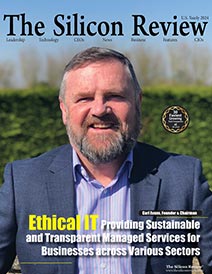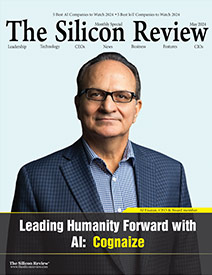10 Fastest Growing Software Companies 2019
Bringing the Power of Location at People’s Fingertips: sensewhere
The Silicon Review
![]()
sensewhere emerged from pioneering technology developed by a team of researchers at the University of Edinburgh with support from the Scottish Government. The team was joined by commercial experts from leading technology companies in order to found sensewhere in 2009.
sensewhere’s indoor location technology is underpinned by an extensive patent portfolio. The software enables indoor positioning, with no additional infrastructure, in areas where GPS satellite signals are weak or blocked such as indoors or in dense urban areas. The company understands that technology develops very quickly and today, people rely on mobile devices for finding, connecting, communicating, organizing, and playing.
Consumers spend a high percentage of time indoors and having access to the power of the online world at schools, shops, and airports makes life more convenient, efficient, and fun. With retail evolving into the online world, traditional physical retail is threatened. However, an opportunity exists to harness the power of online retail to improve engagement, loyalty, and ultimately total revenue.
Intelligent analysis of behavior, location, inventory, and trends enables retailers to connect with consumers in a much more impactful manner. sensewhere is a pioneer in the indoor location industry with its own unique approach to position triangulation using a mobile device. Its biggest goal is to connect the world in a way that is relevant, advantageous, clever and seamless to the consumer. This is enabled with the location at the tip of a finger.
Universal Location and Navigation Solutions Provider
Location context has become increasingly important in the way people communicate, navigate, and access services – it allows businesses to connect with customers and everyone can find exactly what they want, wherever they are, in an instant.
GPS and other global navigation satellite systems (GNSS) including Galileo, GLONASS, and BeiDou, have been deployed to provide location information for vehicles and mobile devices around the world. In order to work accurately, line-of-sight visibility to a sufficient number of satellites is required. Indoor environments such as shopping malls, airports, hospitals, and stadiums or even built-up urban areas are GNSS black spots.
That’s where sensewhere comes in. Its innovative technology provides universal location and navigation data where GNSS signals are blocked, filling the gap.
sensewhere Patented Technology
sensewhere technology solves the indoor positioning problem globally using the power of the crowd of mobile users. It has developed innovative hybrid positioning technology in a suite of distributed solutions. Its goal is to bring the GPS experience indoors and make accurate positioning available everywhere.
Below are some of the key components of the sensewhere system.
Crowdsourcing: The concept of crowdsourcing is not new and crowdsourcing has been used to determine the location of Wi-Fi transmitters. However, current crowdsourcing efforts rely on GPS for positioning and typically the indoor transmitter locations are not well determined. The sensewhere patented technology allows the power of the crowd to be used to extend coverage to indoor locations. The system automatically learns the location of indoor wireless transmitters and self-corrects when those transmitters are moved or replaced. Throughout this process, all user data is obfuscated for complete privacy.
Wi-Fi Positioning: The Wi-Fi location engine is the core of the sensewhere distributed solution. Mobile devices receive signals from existing Wi-Fi infrastructure (over 2 billion Wi-Fi Access Point (WAP) transmitters worldwide). These signals are sent to the sensewhere server for learning and positioning. The position is determined by triangulation from matching Wi-Fi signals that have been learned and located previously.
BLE Positioning: Positioning using Bluetooth Low Energy (BLE) beacons is similar to Wi-Fi positioning and has the potential to be more accurate in venues where such beacons are deployed. The sensewhere solution does not require calibration and can automatically discover and use various existing or newly installed BLE beacons such as iBeacon or Eddystone.
Hybrid Indoor Positioning: sensewhere’s proprietary technology utilizes data provided by the motion sensors of the mobile devices including compass, gyroscope, accelerometer, and barometer and combines it with measurements made from wireless transmitters (including Wi-Fi and BLE) and data from the crowdsourced location database in the cloud to accurately determine position indoors. The sensor fusion improves accuracy and smooths the position output in real time. In addition, the sensewhere system also continuously post-processes sensor data to better determine the location of Wi-Fi and BLE transmitters indoors. This hybrid approach leverages existing hardware in phones and buildings to significantly improve the coverage and accuracy of location services in urban and indoor areas.
Indoor Mapping: Indoor maps are a key component for search, tracking, and navigation applications to allow the user to visualize where they are and what is nearby. The sensewhere solution provides position information that can be used with maps from any source. Various map solutions have been used in existing sensewhere applications.
Greet the Leader
Rob Palfreyman, CEO, Co-founder









